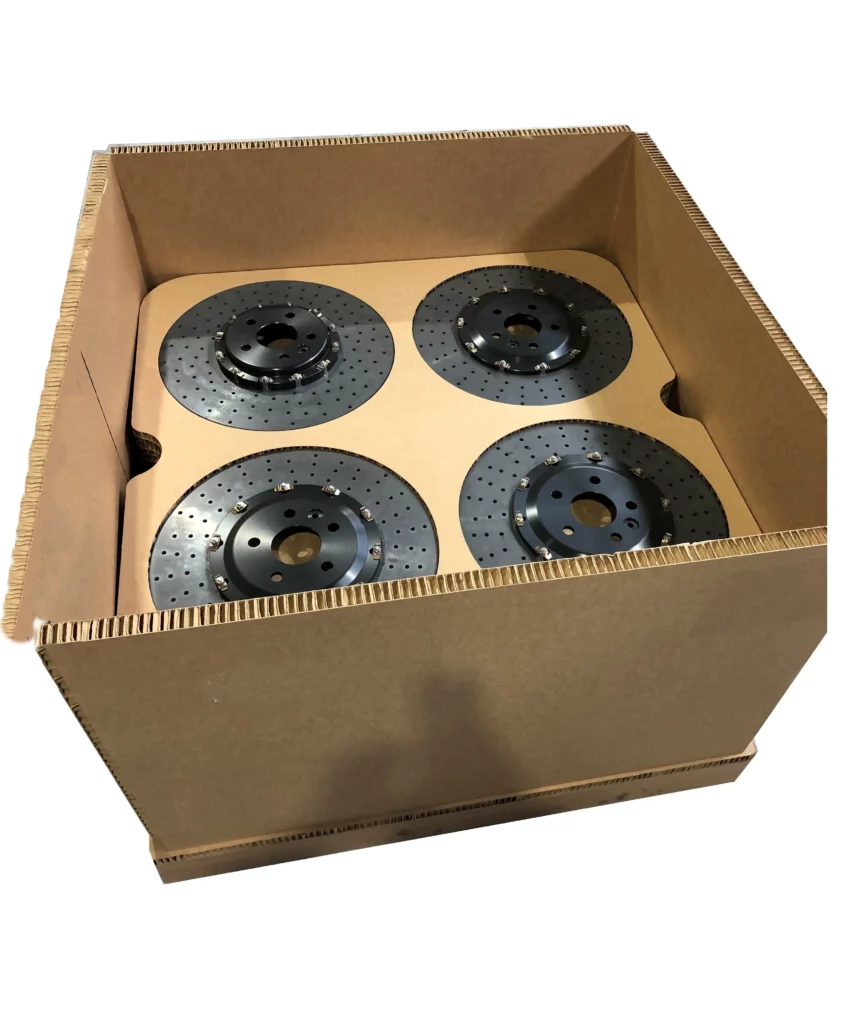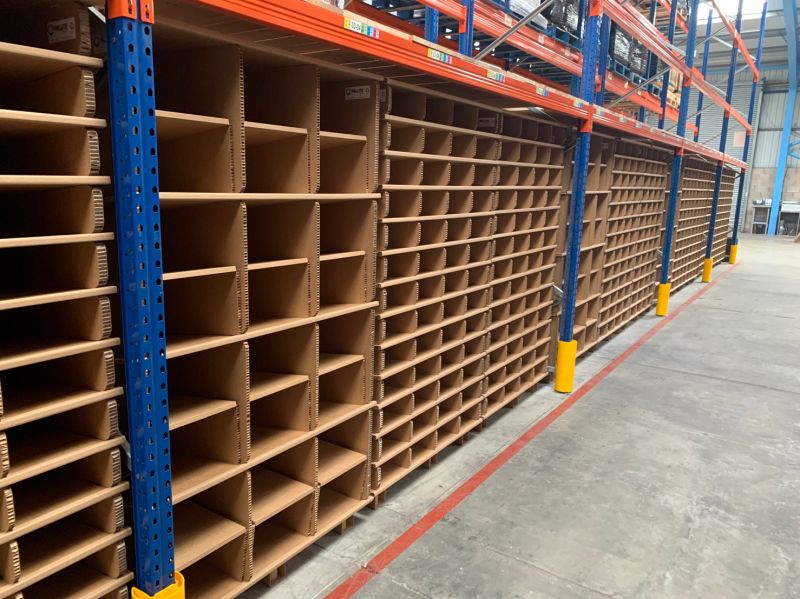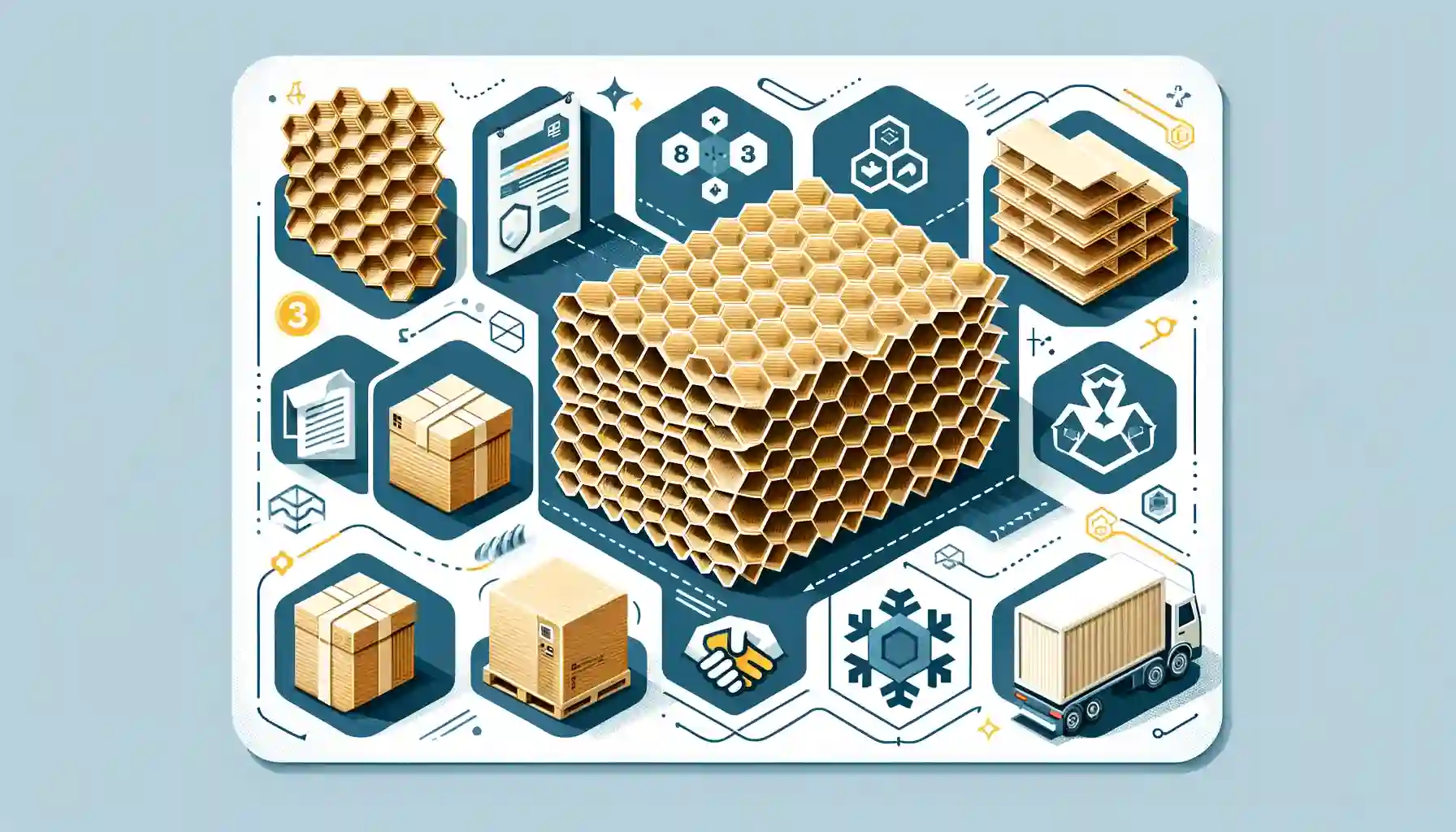Selecting the right material for packaging and construction is crucial, especially when considering the strengths of honeycomb and corrugated cardboard. While both materials are prevalent in various industries, recent advancements have particularly enhanced the durability and strength of honeycomb cardboard, making it a standout choice for many applications.
Understanding the Structures
Honeycomb Cardboard
Honeycomb cardboard is notable for its unique structure, consisting of a series of interconnected cells that resemble a honeycomb. This design not only makes it lightweight but also surprisingly strong and durable. Recent developments have further improved its compressive strength, making it comparable to traditional materials while still maintaining its lightweight advantage.
Corrugated Cardboard
In contrast, corrugated cardboard features a layer of corrugated core paper sandwiched between flat linerboards. This structure provides good compression resistance and is widely used for its strength. However, it doesn’t quite match the lightweight and insulating properties of honeycomb cardboard.
Comparing Strength and Durability
The discussion around honeycomb vs. corrugated cardboard often centres on their strength and durability, with recent advancements putting honeycomb cardboard at the forefront in many respects.
Honeycomb Cardboard
- Enhanced Strength: Modern honeycomb cardboard offers exceptional strength, rivalling that of corrugated options.
- Durability: It’s designed to withstand significant wear and tear, making it ideal for long-term use and reusable packaging solutions.
- Flexibility and Shock Absorption: Its unique structure provides excellent flexibility and shock absorption, protecting contents effectively during transit.
Corrugated Cardboard
- Compressive Strength: Traditionally known for its high compressive strength, corrugated cardboard is suitable for heavy loads.
- Rigidity: It tends to be more rigid than honeycomb cardboard, which can be an advantage or disadvantage depending on the application.
Thermal Insulation and Weight
Another key difference between these two materials lies in their thermal insulation properties and overall weight, which are critical for various applications.
Honeycomb Cardboard
- Superior Thermal Insulation: The honeycomb structure provides excellent insulation, making it ideal for temperature-sensitive shipments.
- Lightweight Nature: It is significantly lighter than corrugated cardboard, contributing to lower transportation costs and easier handling.
Corrugated Cardboard
- Lower Insulation: Corrugated cardboard doesn’t offer the same level of thermal insulation as honeycomb cardboard.
- Heavier Weight: Generally heavier, it can increase transportation costs and may be more challenging to handle in large sizes.
In summary, while corrugated cardboard has been a staple in packaging for its strength and rigidity, the advancements in honeycomb cardboard technology have made it an equally strong contender. Its lightweight nature, combined with improved durability and excellent insulation properties, make honeycomb cardboard a highly versatile and efficient choice for a wide range of applications.

Weight Considerations
Lightweight Nature of Honeycomb Cardboard
Honeycomb cardboard’s design significantly reduces its weight while maintaining structural strength. This lightweight nature stems from the honeycomb structure, where the cells create a robust yet light material. The advantages of using honeycomb cardboard, especially in packaging and shipping, are substantial. It allows for easier handling, reduces transportation costs, and minimises the environmental impact through lower carbon emissions. These benefits are particularly vital in industries where large quantities of materials are transported frequently.
- Benefits:
- Reduced shipping and transportation costs.
- Easier handling and manoeuvrability for large packages.
- Lower carbon footprint due to lighter transportation loads.
Weight of Corrugated Cardboard
Contrastingly, corrugated cardboard tends to be heavier because of its multi-layered and dense structure. This added weight can impact various aspects of its use and logistics. Heavier packaging materials can increase shipping costs and complicate the handling process, particularly in large-scale operations or where manual handling is involved. The increased weight might also contribute to higher carbon emissions during transportation.
- Considerations:
- Potentially higher transportation and shipping costs.
- More challenging handling and storage, especially for large shipments.
- Possible increase in carbon emissions during transport.
Application Fields
Uses of Honeycomb Cardboard
Honeycomb cardboard, known for its lightweight and strong characteristics, finds its application in several fields. Its structural design makes it an ideal choice for lightweight construction materials, offering excellent thermal insulation properties. It’s also extensively used in packaging, providing a sturdy yet light solution for protecting goods during transit.
- Applications:
- Lightweight construction materials for buildings and structures.
- Packaging solutions that require strength without the added weight.
- Insulation materials in construction for thermal efficiency.
Applications of Corrugated Cardboard
Corrugated cardboard, renowned for its strength and rigidity, is a staple in the packaging industry. It’s the go-to choice for various packaging solutions, particularly where the strength and protection of contents are paramount. Its use spans across manufacturing sectors, from small-scale businesses to large corporations.
- Common Uses:
- Manufacturing of durable packaging boxes and cartons.
- Shipping packages where compressive strength is necessary.
- Protective packaging for a wide range of consumer goods.
Pallite’s Innovative Use of Honeycomb Cardboard

Embracing Sustainability with Honeycomb Cardboard
Pallite stands at the forefront of innovation in packaging solutions, particularly through its use of honeycomb cardboard. Emphasising sustainability and efficiency, Pallite has integrated this material into various products, reflecting a commitment to environmentally responsible practices. Honeycomb cardboard’s lightweight yet strong characteristics align perfectly with Pallite’s ethos of reducing environmental impact while maintaining high-quality standards.
- Sustainable Practices:
- Use of lightweight, strong honeycomb cardboard reduces transportation emissions.
- Commitment to environmentally responsible packaging solutions.
- Focus on efficiency without compromising product protection.
Showcasing Honeycomb Innovations
Pallite Group’s product line, including shipping crates and the innovative PIX product, showcases the practical applications and benefits of honeycomb cardboard. These products demonstrate the versatility of honeycomb cardboard in providing robust protection while remaining lightweight. The use of honeycomb cardboard in these applications highlights its superiority in strength, durability and environmental friendliness.
- Innovative Products:
- Shipping crates that are lightweight yet durable for secure transportation.
- The PIX product, utilising honeycomb cardboard for efficient and versatile storage solutions.
- A range of packaging products that highlight the material’s protective qualities and lightweight nature.
Conclusion
Both honeycomb and corrugated cardboards have their distinct advantages and disadvantages, making them suitable for different applications. Honeycomb cardboard, with its lightweight structure and strong durability, is ideal for applications requiring efficient transport and insulation.
Corrugated cardboard, known for its high compressive strength and rigidity, is well-suited for heavy-duty packaging needs. Pallite’s innovative use of honeycomb cardboard in their shipping crates and PIX product highlights the material’s versatility and alignment with sustainable practices.
For those considering packaging and shipping solutions, Pallite’s honeycomb cardboard offerings present an excellent balance of strength, sustainability, and efficiency. Whether for lightweight construction, insulation, or robust packaging, honeycomb cardboard offers a compelling choice in the modern world of sustainable materials.
If you want to find out how our innovative honeycomb products can help in aspects of your warehousing or logistic endeavours, get in touch today!
Written by David Rose
